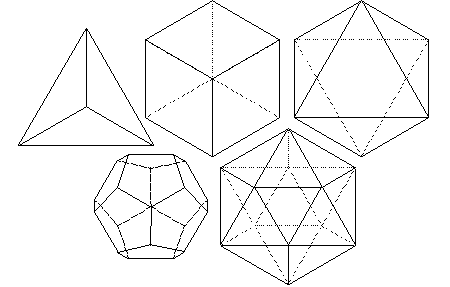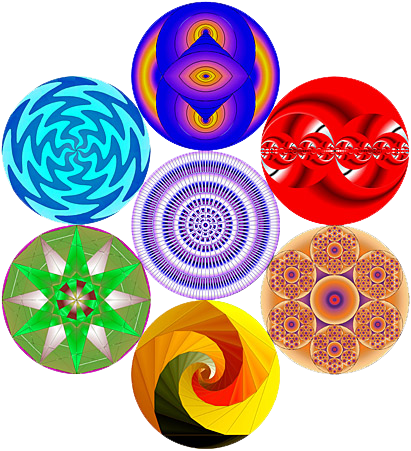In this video recording of a class given as part of the School For A Course In Miracles (SFACIM) curriculum led by Lyn Corona and Tim Wise, Bruce Rawles reads and discusses a very Platonic lesson from A Course In Miracles, Workbook Lesson 184: “The Name of God is my inheritance.” – W-pI.184.
Here are the first three paragraphs of this Workbook Lesson from ACIM:
“You live by symbols. You have made up names for everything you see. Each one becomes a separate entity, identified by its own name. By this you carve it out of unity. By this you designate its special attributes, and set it off from other things by emphasizing space surrounding it. This space you lay between all things to which you give a different name; all happenings in terms of place and time; all bodies which are greeted by a name.
This space you see as setting off all things from one another is the means by which the world’s perception is achieved. You see something where nothing is, and see as well nothing where there is unity; a space between all things, between all things and you. Thus do you think that you have given life in separation. By this split you think you are established as a unity which functions with an independent will.
What are these names by which the world becomes a series of discrete events, of things ununified, of bodies kept apart and holding bits of mind as separate awarenesses? You gave these names to them, establishing perception as you wished to have perception be. The nameless things were given names, and thus reality was given them as well. For what is named is given meaning and will then be seen as meaningful; a cause of true effect, with consequence inherent in itself.” – W.p1.184.1-2
The Greek philosopher Plato is known for – among many things – 5 fundamental geometric shapes that represent symbols for fire, earth, air, water, and spirit – called the Platonic solids, yet – perhaps far more importantly – he also championed the idea that the symbol is not the thing it represents. A substitute can’t be the real deal! 
Allegories, representations, metaphors, myths, fables, analogies, parables, legends, and nursery rhymes all make use of symbols to attempt to convey a deeper meaning, a more universal truth so that we can generalize our learning. ACIM asks us to look at everything in space and time, all of duality as symbol, as metaphor, as representation of mind so that we can go beyond the form to the content in the mind. Lots of cultures have this idea: Buddhism: We foolishly worship the finger pointing to the moon, instead of looking where it’s pointing.
Geometer colleague Nassim Haramein in grade school questioned the existence of dimensions: 0, 1, 2, 4, and beyond; he asked his grade school teacher why 3-dimensional objects “exist” yet those in dimensions 0, 1, 2, 4 and beyond do not. Why does a point not exist except as a mathematical idea, yet a cube composed of lines infinitesimally thin, in turn, composed of points infinitesimally small in all dimensions somehow (magically) have “existence”? There are a number of appearances of words related to symbols in ACIM (including variations of each word):
There are a number of appearances of words related to symbols in ACIM (including variations of each word):
- name: 235
- image: 130
- symbol: 124
- substitute: 102
- representation: 94
- sign: 80
- figure: 42
- myth: 4
- allegorical: 1
- token: 1
- metaphor, fable, parable, legend: 0
We have identified with SYMBOLS (individuality – a symbol of separation, further symbolized by bodies) instead of SOURCE. References in ACIM to the words “image” and “symbol” are in boldface below:
“The fundamental question you continually ask yourself cannot properly be directed to yourself at all. You keep asking what it is you are. This implies that the answer is not only one you know, but is also one that is up to you to supply. Yet you cannot perceive yourself correctly. You have no image to be perceived. The word “image” is always perception-related, and not a part of knowledge. Images are symbolic and stand for something else. The idea of “changing your image” recognizes the power of perception, but also implies that there is nothing stable to know.” – T-3.V.4
“God did not make the body, because it is destructible, and therefore not of the Kingdom. The body is the symbol of what you think you are. It is clearly a separation device, and therefore does not exist. The Holy Spirit, as always, takes what you have made and translates it into a learning device. Again as always, He reinterprets what the ego uses as an argument for separation into a demonstration against it.” – T-6.V-A.2:1-5
References in ACIM to the word “myth” are in boldface below:
“Spirit in its knowledge is unaware of the ego. It does not attack it; it merely cannot conceive of it at all. While the ego is equally unaware of spirit, it does perceive itself as being rejected by something greater than itself. This is why self-esteem in ego terms must be delusional. The creations of God do not create myths, although creative effort can be turned to mythology. It can do so, however, only under one condition; what it makes is then no longer creative. Myths are entirely perceptual, and so ambiguous in form and characteristically good-and-evil in nature that the most benevolent of them is not without fearful connotations.
Myths and magic are closely associated, since myths are usually related to ego origins, and magic to the powers the ego ascribes to itself. Mythological systems generally include some account of “the creation,” and associate this with its particular form of magic. The so-called “battle for survival” is only the ego’s struggle to preserve itself, and its interpretation of its own beginning.” – T-4.II.8:6-12,9:3
Symbols can be used to bring us back to our minds (and recognize the sameness to see we’re joined) or to further the belief in separation, divisiveness, and the guilt of imagining we fragmented Perfect Oneness into countless parts, with countless names. Early workbook lessons ask us to question our attempted investment of alleged meaning in symbols, ego’s relentless attempt to ascribe meaning to the meaningless:
“I have given everything I see in this room […] all the meaning that it has for me.” – W.pI.2
Here are some related quotes from Ken Wapnick on a YouTube video (Q & A: Separation and Specialness –from the highly recommended FACIM YouTube Channel with further support from the highly recommended SFACIM YouTube Channel):
“This whole world is just a dream and a set of symbols.” …
“The problem is that people don’t understand symbols. Everything is a symbol. Words are symbols. Concepts are symbols. Theology is a symbol. Pathology is a symbol. Symbols are not real.” …
“There is no body outside of the mind.”
In other words; the symbol (form) has not left its source in the mind.
The Little Garden section of ACIM’s texts provides more support for our relinquishment of the needless suffering of attaching (and attacking) our identity with a silly, seemingly separate self:
“It is only the awareness of the body that makes love seem limited. For the body is a limit on love. The belief in limited love was its origin, and it was made to limit the unlimited. Think not that this is merely allegorical, for it was made to limit you. Can you who see yourself within a body know yourself as an idea? Everything you recognize you identify with externals, something outside itself. You cannot even think of God without a body, or in some form you think you recognize.
The body cannot know. And while you limit your awareness to its tiny senses, you will not see the grandeur that surrounds you. God cannot come into a body, nor can you join Him there. Limits on love will always seem to shut Him out, and keep you apart from Him. The body is a tiny fence around a little part of a glorious and complete idea. It draws a circle, infinitely small, around a very little segment of Heaven, splintered from the whole, proclaiming that within it is your kingdom, where God can enter not.” – T-18.VIII.1-2
Also, elsewhere in the Course:
“I have made every effort to use words that are almost impossible to distort, but it is always possible to twist symbols around if you wish.” – T-3.I.3:11
… and the very Platonic reference:
“Let us not forget, however, that words are but symbols of symbols. They are thus twice removed from reality.” – M-21.1:9-10
As usual, ego has everything inside out, upside-down and backward: as can be; our reality is pure being, experience; our ego’s experience is existence set apart from the rest of the universe, cut away from the whole, fragmented and orphaned from Unity.
“By this you designate its special attributes, and set it off from other things by emphasizing space surrounding it.” – W.pI.184.1:5
Artists must use contrast to emphasize the “negative space” around an object to make it stand out and appear distinguishable; to divide foreground and background; to sever subject from object, an observer from the observed, self from “not-self”.
Our science “disproved” the idea of the “ether” which fills and connects all space, further reinforcing the belief in separation, although Holy Spirit asks us to find Unity in Mind and overlook ego’s misinterpretations of bodies by ascribing meaning to them.
“You see something where nothing is, and see as well nothing where there is unity; a space between all things, between all things and you.” – W.pI.184.2:2
This resonates with the “Please hear what I’m NOT saying” poem: “I tell you everything that’s really nothing, … and nothing of what’s everything,” since our Inner Kindness Teacher (what we really are) patiently waits for us to consider the possibility that what we really are will bring us peace and the who (symbol) of what we believe we are (but never were) will only bring us uncertainty, loneliness, and fear.
The number of words to divide unity keeps growing over time, reflecting the ego’s strategy of divide and be conquered. Jill Bolte Taylor‘s “My Stroke of Insight” TED talk seems to share a helpful pointer to an experience where words to classify everything as separate suddenly were unavailable through her medical crisis; ACIM suggests a sustainable, gradual, gentle process of questioning our identification with symbols – all symbols including every silly, seemingly separate self (or “thing” in the dualistic dream universe of space, time and fleeting, ephemeral metaphors.
(This recording was made July 26, 2020.)